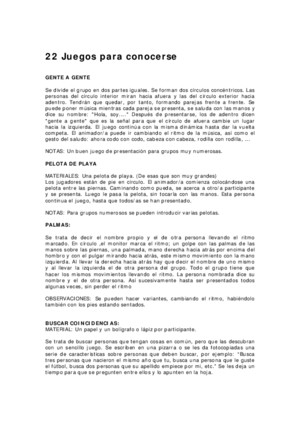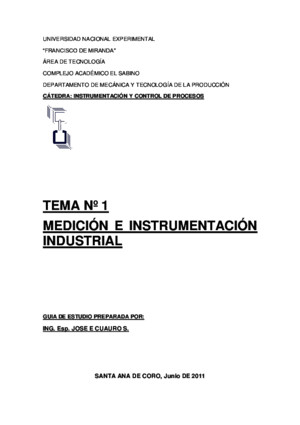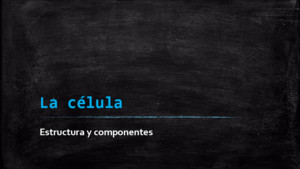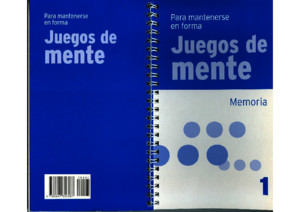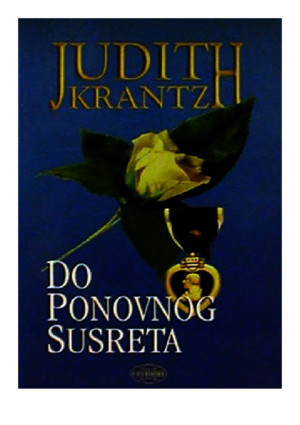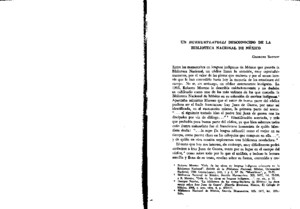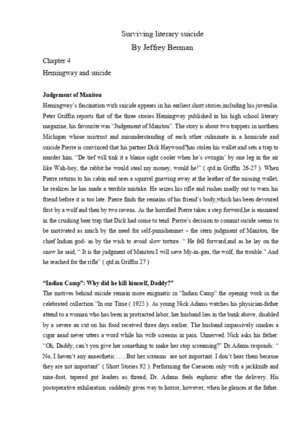Judenplatz - concurso
There is document - Judenplatz - concurso available here for reading and downloading. Use the download button below or simple online reader.
The file extension - PDF and ranks to the Graphic Art category.
Tags
Related
Comments
Log in to leave a message!
Description
Download Judenplatz - concurso
Transcripts
24 IDEA JOURNAL 2010 Interior Ecologies 25 IDEA JOURNAL 2010 Interior Ecologies ABSTRACT Silent Witness examines the British sculptor Rachel Whiteread’s Nameless Library , (1996-2000), a holocaust memorial in Judenplatz Square, Vienna For her project, the sculptor designed an inverted library in concrete, the proportions being derived from those found in a room surrounding the square While the majority of critics refer to this memorial as an ‘inside out’ library, this paper argues that Whiteread’s design is not so easily understood It will identify the ways in which her design complicates relationships between sculpture and architecture, container and contained, private and public, interior and façade, as well as domestic and civic scales The work is placed within a ‘counter monumental’ tradition of memorialisation, as articulated by James E Young, which demonstrates a radical re-making of memorial sculpture after the Holocaust It is argued that this site-specic memorial, partially cloned from the urban context in which it is placed, commemorates a loss that is beyond words Nameless Library utilises architectural operations and details to evoke a disquieting atmosphere in urban space, borrowing from the local to inculcate neighbouring structures as silent witnesses to past atrocities The memorial is compared to the casemate fortications on the Atlantic wall; the defensible spaces of bunkers, described by Paul Virilio in his book Bunker Archaeology as ‘survival machines’ It is argued that Whiteread’s careful detailing of Nameless Library is designed to keep memory alive Under Whiteread’s direction, the typological form of the bunker is transformed into a structure of both physical and psychic defense The memorial has been specically designed to resist attack by vandals and also functions as a defence against entropy, taking into itself and holding onto lost loved ones, preserving their memory Silent Witness: Rachel Whiteread’s Nameless Library Rachel Carley : Unitec, New Zealand Rachel Whiteread’s sculptural oeuvre evidences an continuing interest in the evolution and transformation of physical interiors Her public sculpture Nameless Library is one project that can be understood as an evolutionary interior Using her sculptural vocabulary Whiteread strategically folds ad ivoltes codesed layers of historical, cltral ad architectral activity specic to the project’s particular site and surrounding context In 2000, Whiteread’s Holocaust memorial Nameless Library was dedicated in Judenplatz Square in Vienna Whiteread’s memorial design elaborately convolutes relationships between sculpture and architecture, container and contained, private and public, interior and façade, as well as domestic and civic scales The project’s strength inheres in its detailing The memorial’s strategic assemblage of positive and negative cast elements has been carefully detailed to depict a work of mourning in perpetuity It achieves this by cannily responding to its historical site and surrounding context, turning the architecture of the square in upon itself to foreground Vienna’s disavowal of anti-Semitic persecution since the Middle Ages: looking to the local and its role as silent witness in order to draw attention to past atrocities committed on the site In 1994, the late Simon Wiesenthal approached the Mayor of Vienna to discuss the possibility of erecting a Holocaust memorial to commemorate the 65,000 Austrian Jews who died in Vienna or in concentration camps under the National Socialist regime The proposal emerged from dissatisfaction with an existing sculpture, Monument to the Victims of Fascism by Alfred Hrdlicka, installed in the Albertinaplatz in 1988 1 The orgaisig committee for the competitio decided that a grative desig was ot appropriate and this was the motivating force behind the selection of participants, which was limited to an ivited grop of ve Astrias ad ve foreigers The Astria etrats were Valie Export, Karl Prantl and architect Peter Waldbauer, Zbynek Sekal, and Heimo Zobernig in collaboration with Michael Hofstatter and Wolfgang Pauzenberger The foreign entrants were the collaborative artists Michael Clegg ad Marti Gttma, Ilya Kabakov, Rachel Whiteread, Zvi Hecker, ad Peter Eisema Judenplatz or ‘Jews Square’ was decided upon as the location for the memorial It was the site of the rst Jewish ghetto ad is located i Viea’s First District (Figre 1) The small, itimate sqare is accessed by ve arrow streets, ad is poplated by bildigs predominantly from the Baroque period Judenplatz’s picturesque aspect is belied however, by closer inspection into the history of the site Above Figure 1 Anti-Semitic Plaque on Haus zum Grossen, Judenplatz 2, Vienna (detail)Photo taken by author 26 IDEA JOURNAL 2010 Interior Ecologies 27 IDEA JOURNAL 2010 Interior EcologiesThe Judenplatz site has had a tumultuous history and many of the competition entrants made direct or oblique reference to this history and the recent excavations in the square 2 In 1995, the City of Vienna Department of Archaeology discovered beneath the proposed memorial location the remains of the city’s oldest Synagogue, dating from the Middle Ages The unearthing of agstoes from the syagoge revealed scorch marks that testied to the torchig of the temple i 1421 I this pogrom, several hundred Jews burned themselves alive in the synagogue rather than submit to being forcibly baptisedThe sculptural reliefs and the inscriptions that adorn the surrounding buildings on the square bear witness to prior Christian occupations of the Judenplatz and to historic anti-Semitic activity 3 On the eastern side of the square is a bronze sculpture of the Enlightenment poet, playwright, and advocate for tolerance, Gotthold Ephraim Lessing The sculpture was designed by Siegfried Charox ad veiled i 1935 (Figre 2) I 1939, the Nazis removed the sculpture and melted it down for ammunition In 1968, Charoux rebuilt the piece and installed it in Morinplatz The work was relocated to its srcinal Judenplatz locatio i 1981 For the Holocast memorial competitio, some etrats costred the gre of Lessig with ambivalece, for the Enlightenment thinker championed reason and it was a ‘rationality gone mad’ that reached its terrifying conclusion in the catastrophic event of the Holocaust 4 The competition regulations laid particular emphasis on the monument as a work of art that carefully attended to its surroundings and the architectural essence of the Judenplatz The memorial was also to be considered in relation to Misrachi House at Judenplatz 8, a building that has existed on the site sice the fteeth cetry ad had become a locs of Jewish Education Two compulsory texts, rendered in German, Hebrew, ad Eglish were also reqired o the memorial: the rst commemorating the loss of 65,000 Austrian Jewish lives during the Holocaust, and the second listing all of the concentration camps in which these Austrian Jews were killed COUNTER-MONUMENTS Brian Hatton observed that the competition was set between negative terms as ‘not monument, not anti-monument, not museum, not an installation, not an urban intervention’ 5 This negation of the very idea of the monument is emblematised by the emergence of the ‘counter-monument,’ a new sub-genre of Holocaust monuments investigated in detail by the art historian James E Young Counter-monuments are memorial spaces that are, ‘conceived to challenge the very premise of the monument’ 6 These projects eradicate the heroic and triumphal from their schedule, addressing instead the void left in the wake of mass genocide They seek to question the traditional monument’s capacity to do our memory work for us 7 In counter-monumental practices, it is the monument’s very negation, its disappearance that has been foregrounded by many artists charged with designing German Holocaust memorials Strategies of inversion, self-effacement, and disappearance, are evident in projects such as Horst Hoheisel’s negative form monument Aschrott-Brunnen Monument , Kassel, 1987, Jochen and Esther Shalev-Gerz’s Harburg Monument Against War and Fascism and for Peace , Harburg, 1986-1993, and Micha Ullman’s Bibliotek: Memorial to the Nazi Book Burnings, Bebelplatz, Berlin, 1996 As with these contemporary memorials, Whiteread’s proposal is also characterised by a form of negation It fails, however, to stage a disappearing act Rather than being subsumed within the subterranean realm, Nameless Library imposes itself unequivocally within the public domain Whilst living in Berlin for 18 months between 1992-3, Whiteread travelled throughout Germany and Eastern Europe and became fascinated with the history of Berlin under the Third Reich She visited concentration camps in Germany and read extensively on the subject, in particular survivors’ testimonies of the Holocaust Given this experience, the artist felt equipped to address the subject of Holocaust memorialisation 8 THE MEMORIAL I Jewish traditio the rst memorials came i book form, ad Whiteread’s memorial makes reference to Jewish people being the people of the book 9 Her proposal resembles a domestic library seemingly turned inside out so that thousands of cast replicas of books, cast as positive concrete forms, face out toward the viewer, their spines inward set The roof bears a cast in the negative of a ceiling rose, a detail characteristic of those found within the bourgeois apartments lining the square The front elevation displays a negative cast of double doors that face the statue of Lessing The memorial is located on the North East side of the square, and its orientation was determined by the position of the excavated bimah and its axis by the edge of the building at Misraschi House Opposite Figure 2 Anti-Semitic Plaque on Haus zum Grossen, Judenplatz 2, Vienna Photo taken by author Above Figure 3 Rachel Whiteread, 1:20 Scale Model of Nameless Library , 1996 Judenplatz Museum, Vienna (Model Maker: Simon Phipps) Image courtesy of Rachel Whiteread The drawings for Whiteread’s competition entry were made i collaboratio with the architectral rm, Atelier Oe All the technical drawings submitted were at a scale of 1:100 and included a ground plan of Judenplatz Square and the memorial site, sections and elevations, foundation details and wall details of book xigs, ad grod ad roof plas The model for the project was made at a scale of 1:20 from wood, glass, model paste, and paint in collaboration with model maker Simo Phipps (Figre 3)Some critics were wary of appraisig the ished project based on these competition documents Andrew Graham-Dixon wrote about the room devoted to this project in the exhibition Shedding Life, cautioning ‘It is represented by a model…on which it should certainly not be judged’ 10 Rebecca Comay also acknowledged that ‘The crucial differences in detail…between the model and the monument, may nonetheless reveal an essential ambiguity’ 11 Mark Cosis, Bria Hatto, ad William Feaver also had reservations about Whiteread’s proposal at this early stage Cousins’ was suspicious that the project had been hijacked by the symbolism of Jews as the people of the Book, and the Nazi 28 IDEA JOURNAL 2010 Interior Ecologies 29 IDEA JOURNAL 2010 Interior Ecologiesbook burnings, which, he suggests: ‘begins to dilute the technical clarity of her work We shall see’ 12 Architectural critic Brian Hatton had reservations about how successful the work would be at a scale of 1:1 He comments:On examination, convincing as it was as an icon, it was inconsistent as a cast It, too, was an assemblage, of panels and bolted racks; indeed, hollow Paradoxically, its hollowness, its semblance, seemed to some to compromise its capacity to ‘hold’ the dead It should withhold, like the Wailing Wall, like a cave wall, no yonder site, offering, precisely in its termis, iitde Or, like the walls of that remembered war memorial (of Maya Li), holding more in name than it ever could in measure But Rachel Whiteread’s archive reverses that too ‘The dead are here,’ it reminds, ‘but their names are elsewhere’ 13 Hatton’s reservations were founded upon the memorial being a hollow assemblage of cast parts However, this form of assembly was employed in Whiteread’s earlier room-scaled castings and had not hindered these works from conjuring up copious thoughts of loss and memory It is proposed that the completed memorial, with its strategic assemblage of positive and negative cast elements has been carefully detailed to depict a work of mourning in perpetuity Rebecca Comay also qestioed Whiteread’s decisio to elist, for the rst time, positive book castings in this work, rather than her signature negative castings 14 One can argue against Comay’s objectio o a mber of cots Firstly, Comay sggests that Whiteread all bt abados her predilection for negative casting in this memorial, negating her own hallmark But this might be precisely her itetio Hatto otes that each memorial testies twice ‘rst i its ostesive subject of commemoration, and second in the index it presents of its builders’ commitment to remind Whatever signs they deploy in their monuments, builders of memorials also, unavoidably represent themselves’ 15 This turn toward an apparent positivity may in fact be an attempt by the artist to ameliorate the impact of the artist’s signature on the act of memorialisation so that it didn’t overwhelm the memorial programme Secondly, the very strength of Whiteread’s project lies in the artist’s combination of casts of both positive and negative prefabricated elements The work is caught between presence and absence, making any attempts at ‘positivising’ this object unfathomable The artist’s decision to use positive rather than negative book castings was also to make her subject more legible Whiteread comments that the positive book forms were ‘much easier to read as a series of books, and I didn’t want to make something completely obscure’ 16 At the memorial’s unveiling, Simon Wiesenthal said of this act of holocaust remembrance that ‘It is important that the art is not beautiful, that it hurts us in some way’ 17 The memorial’s power lies precisely in its ability to disturb distinctions between architectural typologies, between interiors and exteriors, rendering the familiar strange OBJECTIONS TO THE MEMORIAL Followig the aocemet of Whiteread as the aimos wier of the competitio, objectios to the memorial were elded from across the archaeological, aesthetic, political, cltral, ecoomic, and religious spectrums of the Viennese community Hatton suggests that Whiteread’s entry coviced the jdges ‘by virte of precisely deyig easy ideticatio with received versios of its subject or the legibility of its modality - the monument’ 18 Hatton also presciently notes that perhaps it was this illegibility that was accountable for its belated inauguration, for, ‘as if too cryptic to accept, it has precipitated an unresolved controversy’ 19 Some opposed the memorial on the grounds that Whiteread was not Jewish Shop owners and landlords opposed to the memorial project set up an ‘anti-Whiteread’ petition, collecting 2,000 signatures They complained of a projected loss of business (allegedly 40%), a loss of car parkig spaces ad voiced their reservatios that the sqare wold be ‘disgred by the cocrete colosss’ 20 Some residents also believed there would be potential security concerns, as the memorial might become a target of Neo-Nazi assault The memorial was also criticised on the basis that it would occlude the excavations beneath it, which many already deemed a suitable memorial to the persecution of Viennese Jews 21 Criticism also came from within theological quarters, where some deemed it an ‘affront to the Book and the Name posed by this shrine to illegibility and anonymity’ 22 In contrast, others saw the memorial as too readily stereotyping Jews as intellectuals, as ‘the people-of-the-book’, thereby ignoring working class victims 23 The memorial’s dedicatio was also hidered by the rise of Jörg Haider’s right-wig Freedom Party in Austria After Whiteread was granted the commission, there was growing pressure from prominent members of the Jewish community to change the appearance of the memorial Suggestions were even made to move it to Heldenplatz and preserve the excavations as a more suitable memorial 24 This suggestion was unequivocally rejected by the artist, saying ‘This particular site gave me my vocabulary’ 25 On 26 October 2000, the memorial ad msem were ally veiled Whiteread’s scheme was complemented by architects’ Christian Jabornegg and Andras Pálffy’s re-design of the square and a new Museum of Medieval Jewry at Misrachi House At ground level, the museum contains a room dedicated to the drawings, models, and prototypes designed by Whiteread for the memorial It includes a 1:1 scale plaster mock-up of the ceiling rose, a wooden book prototype, a door handle, and architectural drawings In this setting the memorial’s details are exhibited as tectonic fragments whose representational purpose has been served They now lie in state; their still lives hermetically sealed in glass cases Nameless Library marked a point of departure from Whiteread’s earlier room-scale sculptures in that none of the memorial’s architectural details were directly cast from an existing interior The proportions of a domestic interior hidden behind the baroque facades of the Judenplatz were used to dimension the memorial 26 Inspiration was also gleaned from the ubiquitous architectural features
Recommended


